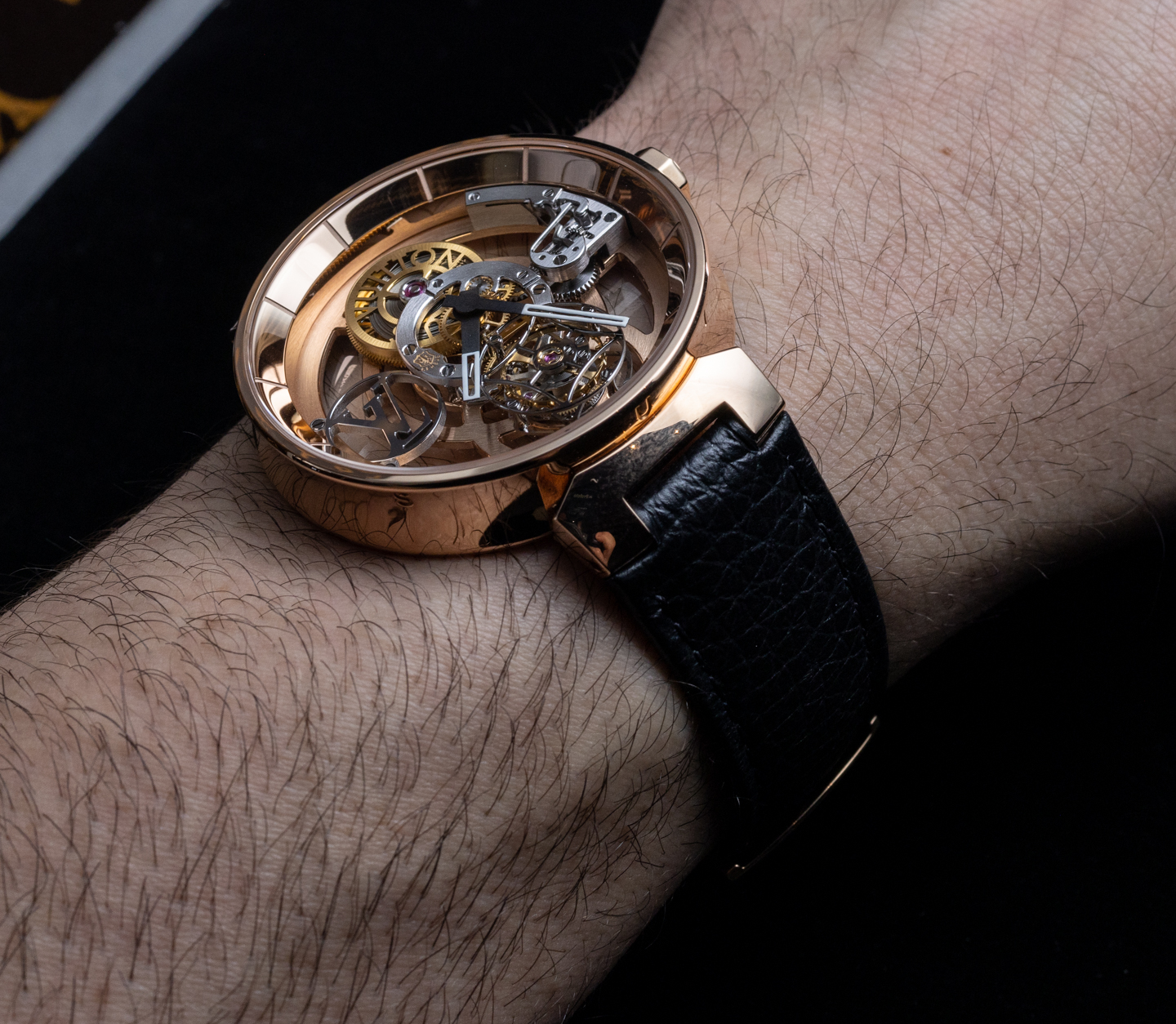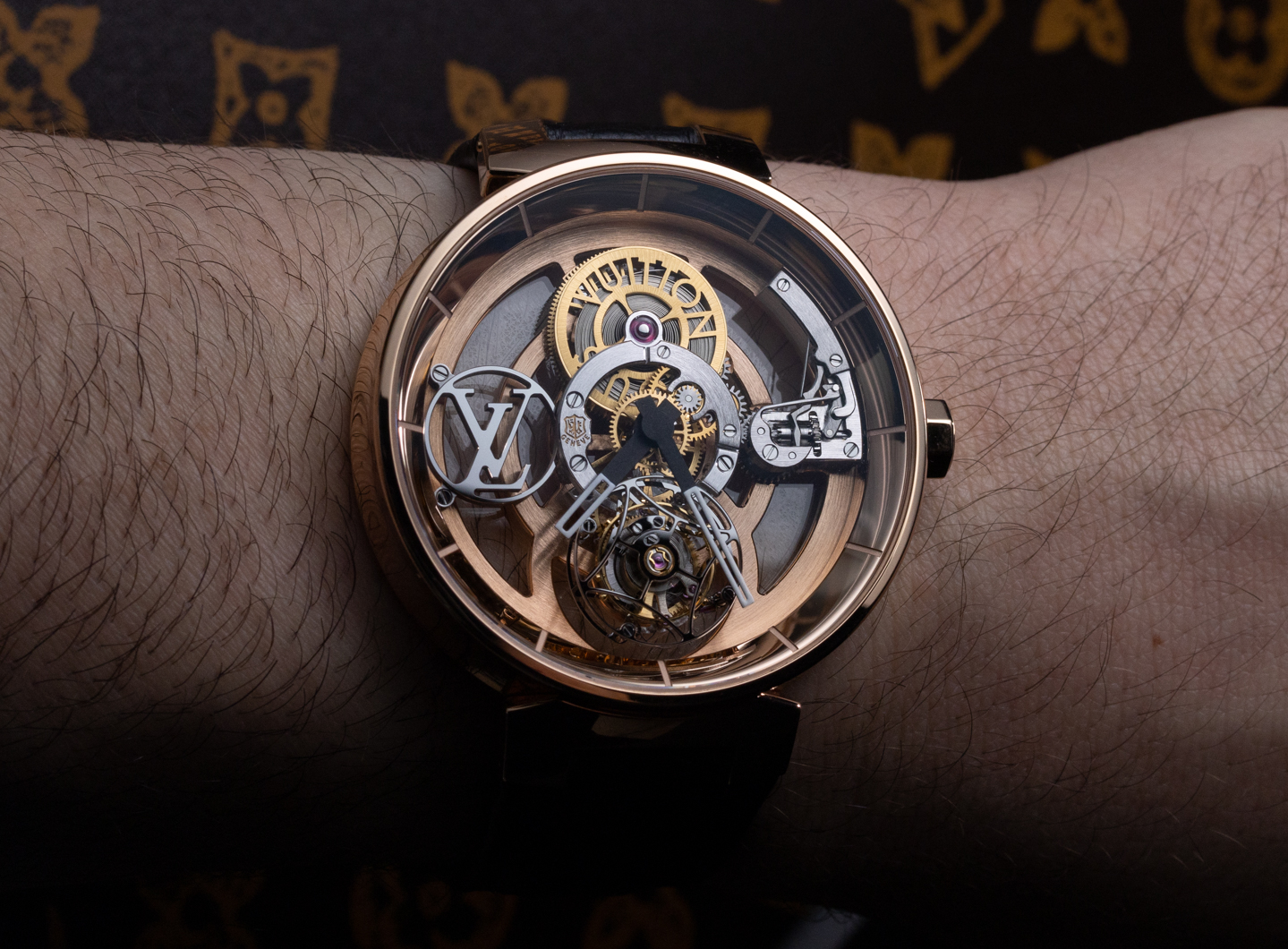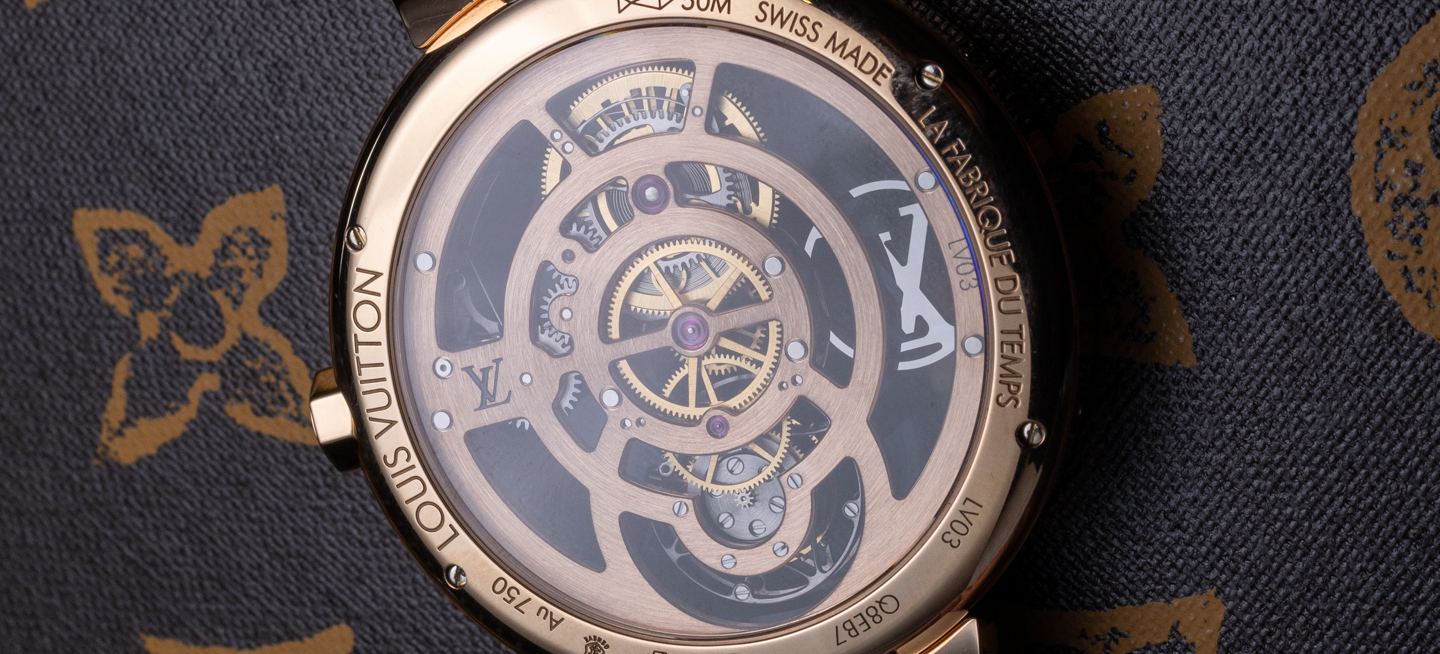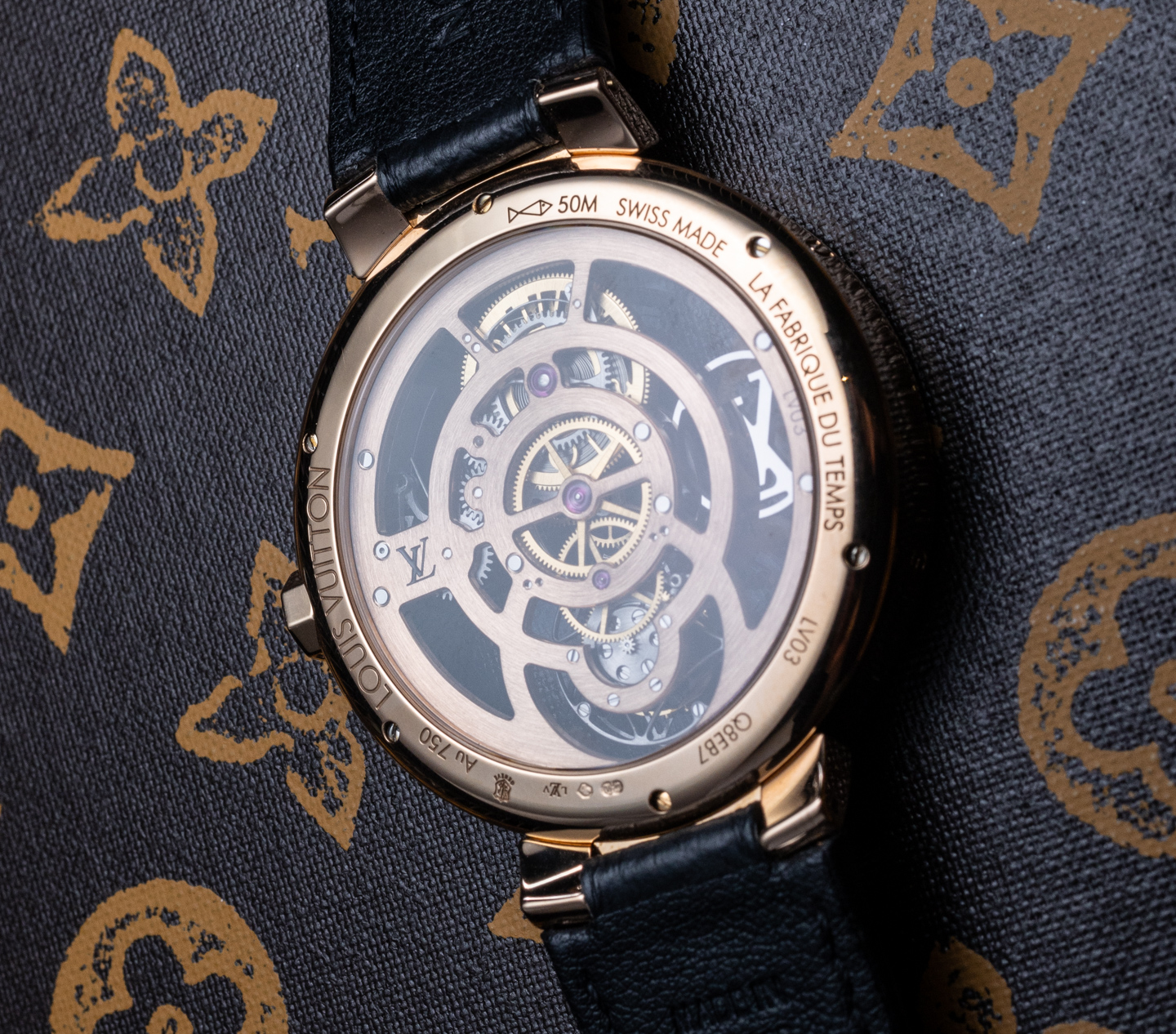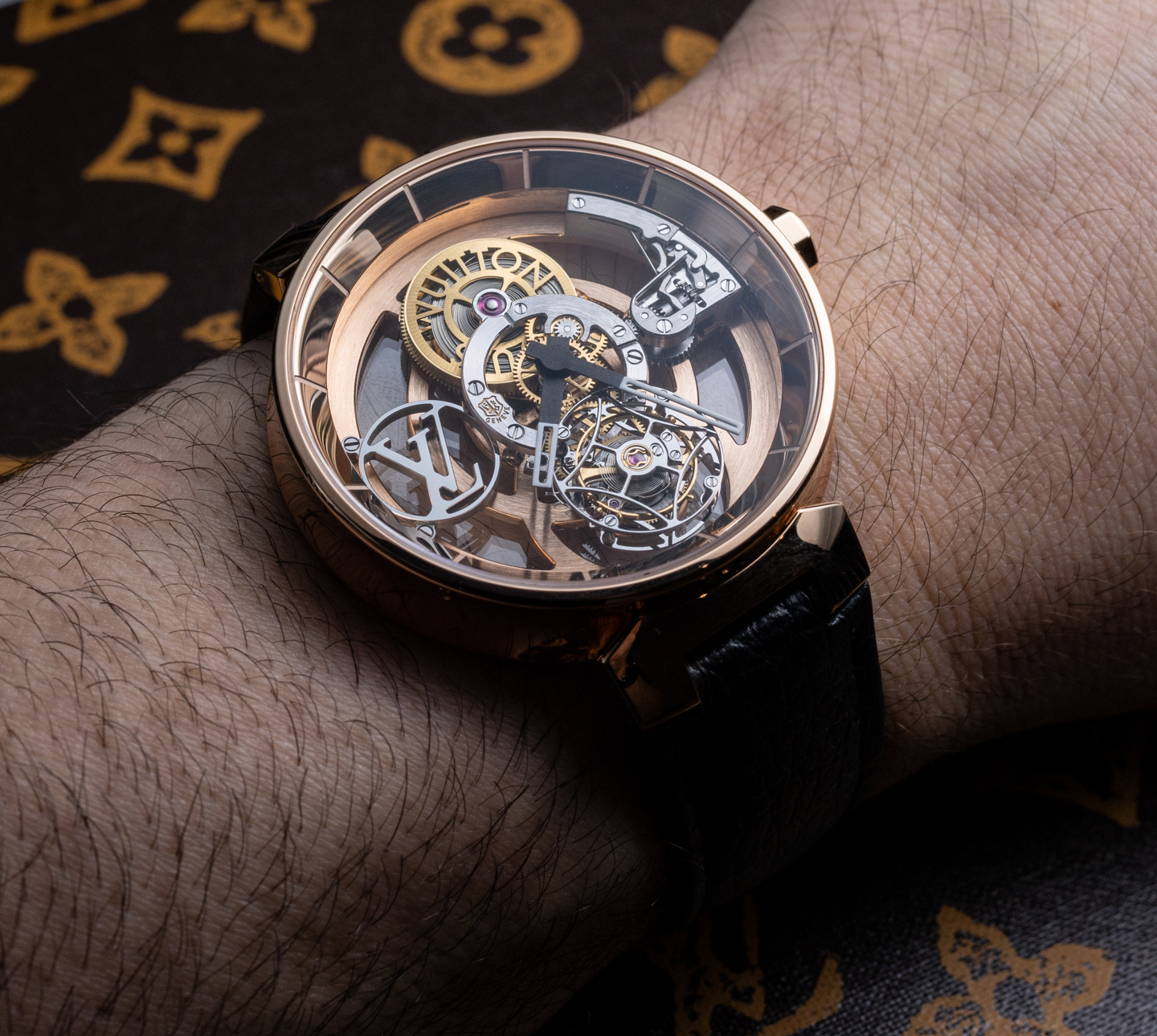
Produced at Louis Vuitton’s Geneva-based watchmaking facility known as “La Fabrique du Temps,” this watch is the Tambour Moon Flying Tourbillon Poinçon De Geneve. Initially debuted in 2017 (here on aBlogtoWatch), this watch has an even more expensive sibling with a sapphire crystal case known as the Louis Vuitton Tambour Moon Flying Tourbillon Poinçon De Geneve Sapphire (aBlogtoWatch hands-on here). The watch is also sometimes known as the Tambour Moon Tourbillon Volant (“flying”) Poinçon de Geneve. The version I checked out today came in an 18k pink gold case that was and is still very much a high-end luxury watch, but nearly half the price of the version that comes with a color sapphire crystal case.
Being in Geneva is really what makes the “Poinçon De Geneve” (Seal Of Geneva) marking on the movement possible. This is so important to the overall watch that it is in the name itself. What we had is a merger of horology and fashion house in a product that was suitable as a top-tier product in both worlds. In a sense, that is what Louis Vuitton always does with its timepieces — that is, to create a product that simultaneously satisfies the requirements of high fashion (beautiful and distinctive visual design with the best materials) and high horology (a highly accurate mechanical movement produced using the finest techniques and visually decorated in classic form). The Seal of Geneva is a mark visible on the movement and is only awarded to watches that meet strict requirements – only one of which is that the watch needs to be made within the canton of Geneva.
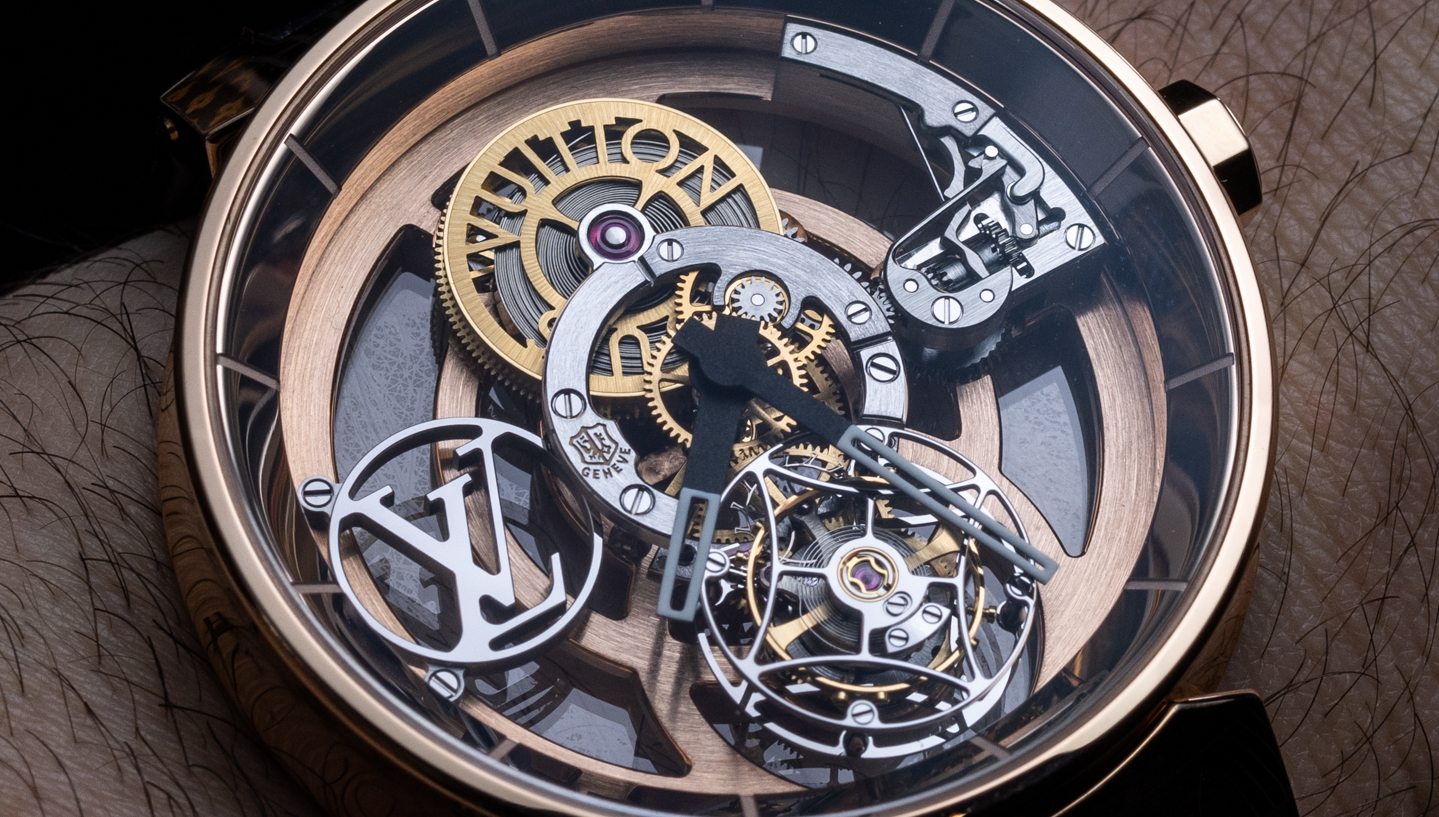
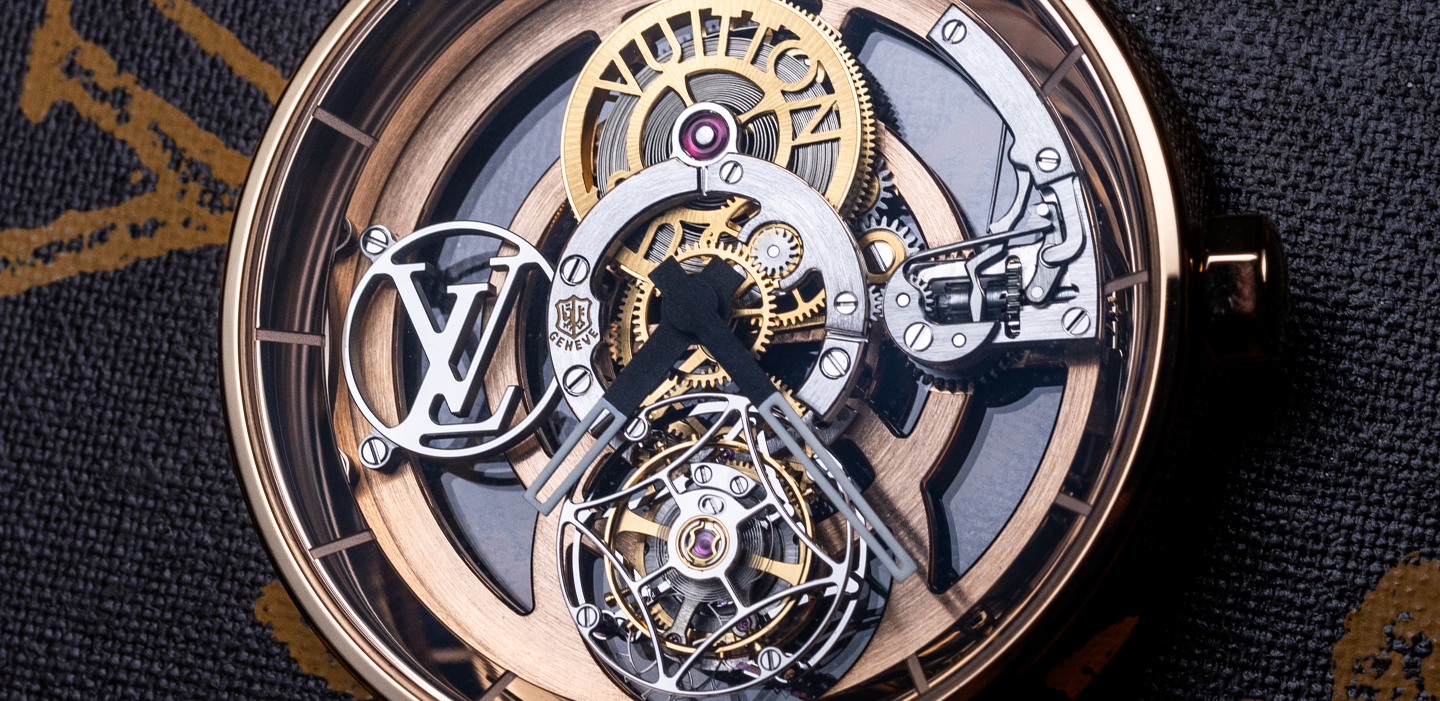
aBlogtoWatch best summarized what goes into the Poinçon De Geneve mark in this article talking about how fellow Genevan brand Roger Dubuis does it. The movement it certifies in this Tambour Moon Flying Tourbillon is the caliber LV 99 manually wound mechanical movement. The movement is produced from 160 parts and operates at 3Hz (21,600 bph) with a power reserve of 80 hours. The movement indicates the time with hours and minutes, as well as the seconds via the flying tourbillon. The movement is meant to be simple on purpose because it is also highly skeletonized and very much exposed from all visual angles through the case. This effect is of course even further amplified in the sapphire crystal-cased version.
When Louis Vuitton first released the Tambour Moon Flying Tourbillon watch collection, a major point was the level of customization available in each watch. Customers could choose options ranging from case material to personalized engravings. That leads to interesting questions in terms of the various examples of the Tambour Moon Flying Tourbillon Poinçon De Geneve watches that have been produced thus far.
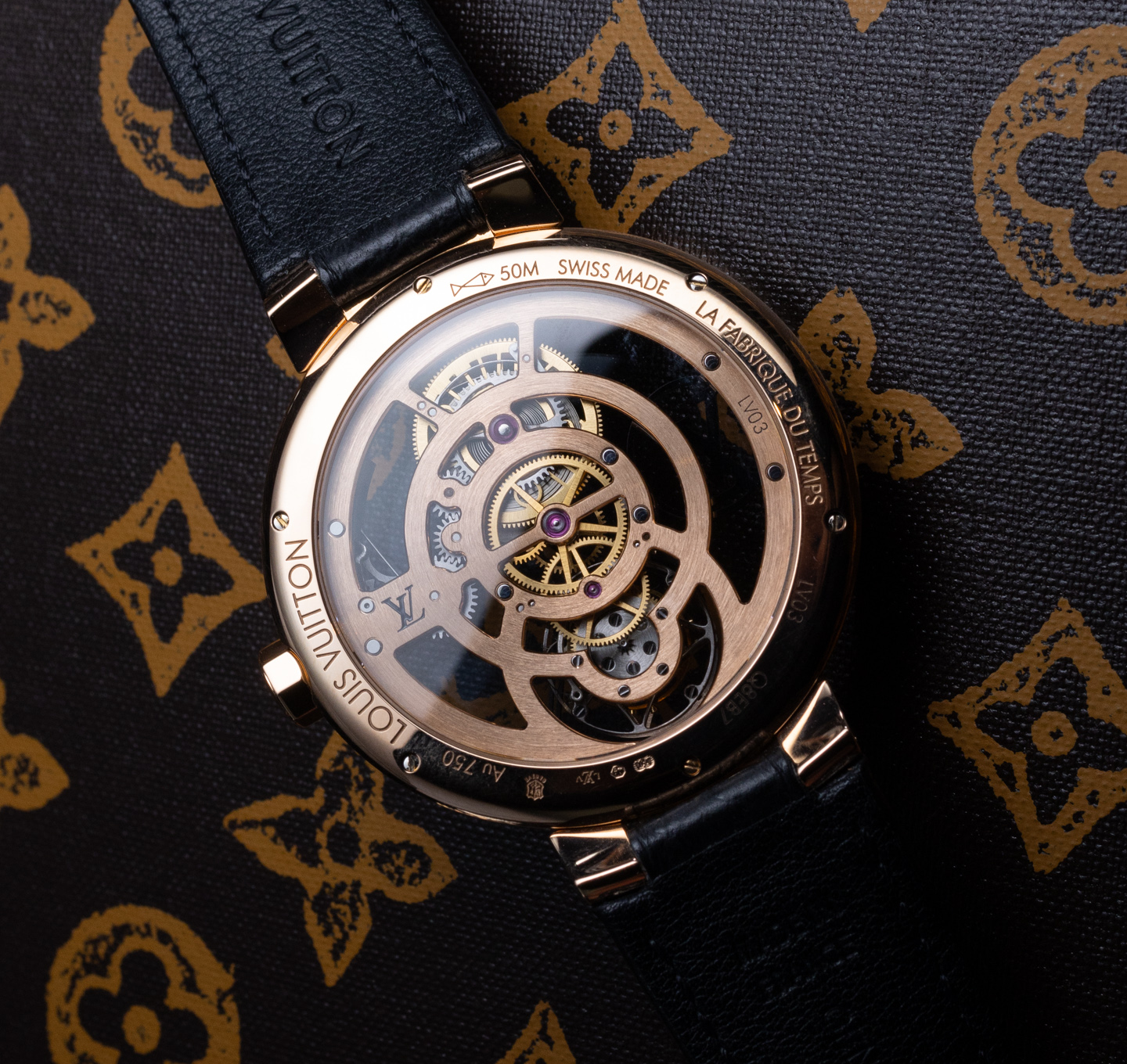
Fabrique Du Temps does complicated movements just as well as it does beautiful movements. The LV 99 movement isn’t the most complicated in its class, but it excels at visual efficiency, quality, aesthetic elegance, and robust construction. The carefully skeletonized bridges and polished angles throughout the movement result in a graceful and lean, but not overly anemic display. I like the use of repeating circles throughout the dial, caseback, and movement bridges. They allow the dial to look remarkably asymmetrically balanced, which is quite rare for manually wound skeletonized tourbillon movements of this type.
The Louis Vuitton Tambour Moon case that this watch uses is one of the offshoots of the original Tambour (“drum”) that was originally released in 2002. The Moon version of the Tambour has an internally sloped convex case that flares outwards to the top and bottom of the case. The case is 42.5mm-wide and actually not too chunky at all with a case thickness of just 9.65mm. The case is water-resistant to 50 meters and is fitted with dual AR-coated sapphire crystals; glare is really not an issue on these watches.
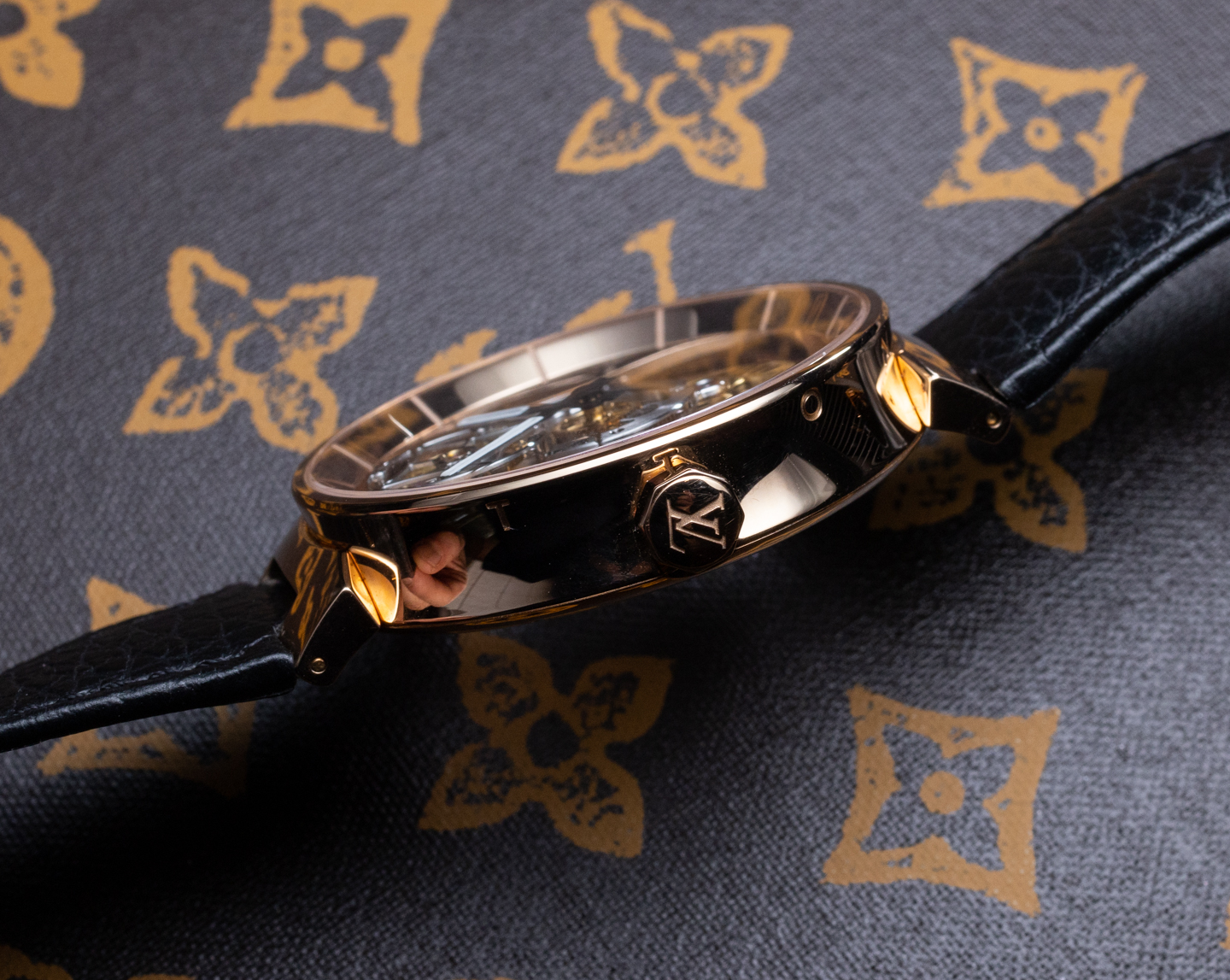
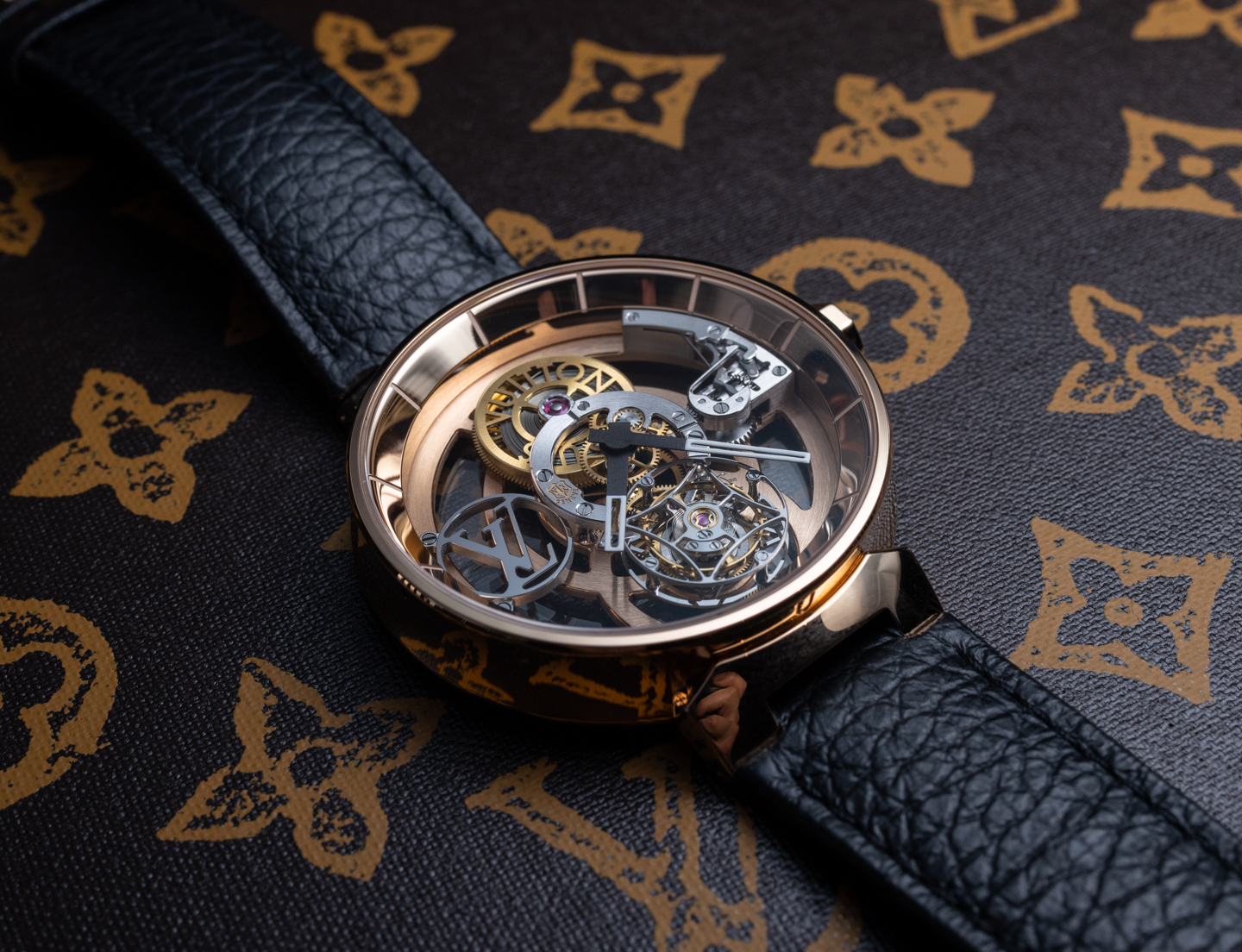 Speaking of legibility, reading the time is quite easy considering the open-faced skeleton dial. The periphery of the dial has a beautifully polished flange with hour markers on it. Not everyone loves the blocky, simple hands Louis Vuitton designed for the Tambour Moon Flying Tourbillon, but they do contribute to positive legibility making this among the rarer practical daily-wear watches in the high-luxury price category.
Speaking of legibility, reading the time is quite easy considering the open-faced skeleton dial. The periphery of the dial has a beautifully polished flange with hour markers on it. Not everyone loves the blocky, simple hands Louis Vuitton designed for the Tambour Moon Flying Tourbillon, but they do contribute to positive legibility making this among the rarer practical daily-wear watches in the high-luxury price category.
Attached to the Louis Vuitton Tambour Moon Flying Tourbillon Poinçon De Geneve is a black alligator strap with an 18k pink gold buckle matching the case. This is the one area where you will want to accessorize a bit, and it seems to make sense to order additional colorful straps to pair with a watch like this. Louis Vuitton will no doubt be happy to make such additional straps (for a price).
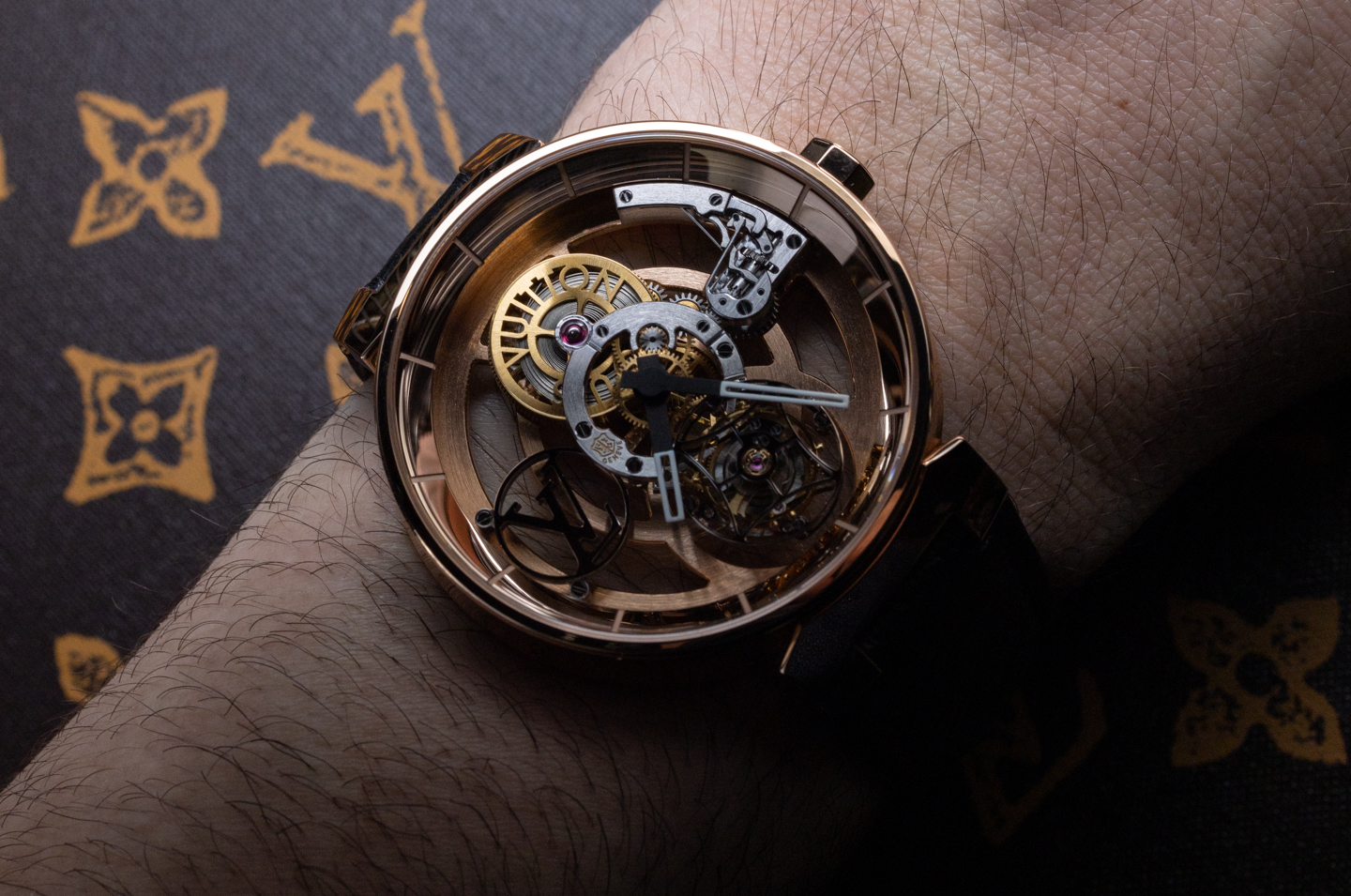
While the Louis Vuitton Tambour Moon Flying Tourbillon Poinçon De Geneve didn’t break any records (that I know of) or define any genres, it was a satisfying composition and one that did define much of what makes Louis Vuitton’s watchmaking division proud. The watch combined the best of Geneva-based traditional watchmaking, along with Louis Vuitton’s signature penchant for a youth-minded high-design aesthetic. If anything, the issue Louis Vuitton perhaps has today is having too many interesting, albeit different, tourbillon-based watches that are now available. The choice for collectors is profound – but so is the size of Louis Vuitton’s fan base, so in that regard, it is easy to celebrate the rich variety of tourbillon toys French Louis Vuitton puts together in their La Fabrique du Temps watchmaking facility in Geneva, Switzerland. Price for the Louis Vuitton Tambour Moon Tourbillon Volant Poinçon de Geneve watch (before any special customization) was $229,000 USD. For more information, please visit the brand’s website.

